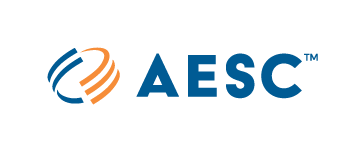Carlsbad, CA – April 29, 2008 — AESC has begun development and demonstration of an Intelligent Agent Software based control system to coordinate energy storage with wind energy sources of electricity with R&D funding from the California Energy Commission (CEC). AESC is collaborating with Beacon Power Corporation, the California Independent System Operator (CAISO), BPL Global Ltd. and Southern California Edison (SCE) to demonstrate the feasibility of mitigating transmission operating issues arising from intermittent wind energy production.
The primary goal of the project is to demonstrate that advanced control technology with energy storage can help expand the delivery of renewable wind energy by effectively increasing the capacity of constrained transmission facilities in the Tehachapi area. This project supports California’s goal to upgrade and expand its electricity transmission and distribution infrastructure per the state’s Energy Action Plan of 2003.
According to Bill Capp, president and CEO of Beacon Power, “The potential for large-scale wind-related energy storage applications is quite significant. Beacon is pleased to be part of an R&D project whose goals include showing how our flywheel energy storage can be applied and controlled to increase transmission capacity and maximize the value of wind generation resources in California.” Capp added, “The Tehachapi project is consistent with Beacon’s interest in exploring and commercializing additional grid applications that have high cyclic requirements, move a great deal of energy through our flywheel systems, address a large and growing global market, and facilitate the deployment of renewable energy.”
The Tehachapi Area is targeted for up to 4,200 MW of new wind generation capacity in the next five years. This growth will worsen existing transmission capacity constraints in that area. While transmission upgrades are planned, they will take years to complete. The California ISO’s new Market Redesign and Technology Upgrade program is expected to address and work to lower some of the costs associated with existing transmission constraints. However, the ideal solution for these problems would include the ability to automatically control energy production from a wind generation area to take advantage of any unused transmission capacity available in real time, and decrease production for a transmission overload condition. Demonstrating this technical capability is one of the primary objectives of this project.
The engineering approach will include the application of “intelligent agent” software controls and Beacon’s flywheel energy storage in an effort to find ways to deliver as much wind energy as possible without exceeding the limits of the locally constrained transmission system. “Intelligent agent” control technology has been identified as a key element of the U.S. Department of Energy’s SmartGrid initiative.
About AESC
AESC provides high quality energy engineering and management consulting services to enable rapid deployment of efficient, cost-effective, reliable, and environmentally friendly energy systems. AESC’s customized technical solutions and services are provided to utilities, government agencies, and corporations that seek to improve energy production, delivery, and end use. Our development efforts include intelligent software agent technology, customized Visual Basic (VB), Excel, Access and SQL Server interface applications, as well as custom Java-based applications for interactive data display. AESC is a privately held company with four California offices located in San Diego, Carlsbad, Concord and Pasadena.
